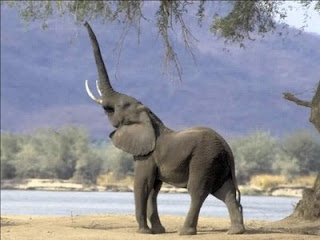dogs, or more precisely ancestors of today's dogs were tamed about 15,000 years ago. The domestication of the dog is beneficial for both, primarily for man defends and keeps the bad and he has a shelter animal is fed, cared for, etc.
Not everyone can and is able to care for a dog. Taking care of a dog means more than giving out food and remove it to make needed. If you are not attentive to the needs of these gets sick sooner or later and died, in addition longer torment. Having a dog means to be able to grow it and take care of him all his life.
Many say that having a dog is like having a baby and in some ways they are right. You have to feed him, wash him, to learn a few rules in order to communicate with him, to be careful and to his needs, etc.
dog domestic animal [1]
Dog Food
Depending on size, race and metabolism dog will eat more or less. In general dog it is not a big animal will not eat so much.
The food that your dog must be balanced and more diversified. This is important, but it is not a problem for those that offer cooked food animal. They will not eat the same food more than 2-3 days, so no dog. Fortunately there are few cases of those who have a dog breed that feed him only with one type of food. It's like eating only cabbage 15 years her days. The body, be it human or animal, needs many vitamins that you take in different types of food.
When it comes to food you should have a list at the beginning, it must not consume dog. Cabbage and corn in large quantities stomach hurt (right stomach was hurt, but the expression is you "hurt the stomach"). Dogs not allowed chocolate, it is toxic to them. Everyone says he is not actually give the dog caiocolata and gives each a square or two. It's worse than if you give one whole. It's like cionura drink, and instead drink a jar occasionally take a teaspoon. Worse bother. After the wonder dog makes various diseases and dying prematurely as he "cared" good.
Like the man dog needs and must ensure fresh water is at your discretion. Except hunting dog, almost all house dogs were weaned from vanatoaresi receiving food from humans.
Dog Behavior
A happy dog is seen from a post. The first thing you see is a dog fur and mood. If fur is happy and has a clean, neat, means that it is a healthy dog. If you stay in the apartment must be taken out 2-3 times a day at least 1-2h for each movement and to make their needs. Dogs staying at the yard have such problems.
Dogs are divided into several categories. They are hunting dogs, guard dogs, companion dogs, sheepdogs, to Formerly dogs were fighting, they were bred and trained to make money.
Cocherii spaniel dogs and Dalmatians are particularly playful and loving children. Dogs are known for their ability to learn and their discipline. For this reason dogs can be trained specifically intrebiuntati penttru lead the blind.
Caine Appearance
The dog is a quadruped animal, that has four legs, bigger or smaller, barking. He senses more developed than human: he sees, smells, hears and feels much better than a man. The dog is covered in fur. The coat can be short or long, soft or wires may have a layer or two layers. Mountain dogs have long coat and two coats that keep them warm in cold temperatures.
It can be almost any color, some even more colors. The weight varies from about one kg (renowned pocket chihuahua dogs) up to 70kg or more (eg Mioritic Shepherd). The limbs ends with claw feet provided. Milk Teeth inlociuta to the final, made up of incisors needed to catch prey, canines and molars needed for cutting and biting food. A dog's age can be determined by dentition. [2]
The 4 Romanian breeds are shepherd Mioritic Raven Shepherd, Shepherd of Bucovina and the Carpathian dog. (Many do not know) Most popular is Mioritic Shepherd.
Reproduction Caine
By breeding were created by descendants breeds coming from your access breed dogs that are pure, otherwise, mongrels. Female, bitch, is a caring and loving mother.
Suckle their young for several months. Besides breeds profitable and helpful to humans receive copies kept growing importance pleasure. Each female can give birth to 2-12 offspring. They are born with eyes closed and ears plugged.
breeds
1. Sheepdogs and Cattle
Bearded Collie Border Collie Belgian Sheepdog or Bobtail Old ... ... Anatolian Shepherd Dog -... Briard Beauceron Belgian Shepherd Herd ... ... Shepherd Dutch Shepherd Shetland Sheepdog Shepherd Romanian Romanian de ... ... Schipperke -...
2. Type Pincher Dog Breeds, Schnautzer, Mastiff, mountain dogs and Swiss Shepherd
Pei Perro de Presa Canario ... Saint Bernard's Leonberger the standard schnauzer Mastiff - Tibetan The Romanian Shepherd Caucasian Shepherd Doberman raven Bulldog (English Bulldog) American Bulldog Cane Corso
3. Type Terrier Dog Breeds
... American Foxhound West Highland White Terrier -... Toy Fox - Fox ... -... Affenpinscher Russian Terrier Amstaff site - American ... Terrier - Welsh Terrier The Australian Terrier Irish Staffordshire -... Jack Russell Terrier Bull ...
5. Dog Breeds Spitz-type dogs and primitive
Samoyed Jindo - dog Icelandic Korean Shepherd
6. Hounds, outrunner and Related races
Rhodesian Ridgeback OTTERHOUND (Hound Basset Hound Drever ... Harrier - dwarfing ...
7. Pointing Dogs
Vizsla Gordon Setter English Setter site (English ... Stabyhoun
8. Dogs intake - rummaging, water dogs
Wirehaired Pointing ...
9. Dog Breeds leisure and Company
French Bulldog Alaskan Klee Kai ... Bichon Bolognese - a Tibetan Spaniel ...
10. Greyhounds
Ibizan Hound Whippet site - a ... Greyhound (Greyhound ..



















































